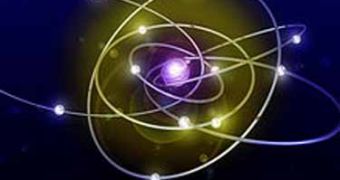Super-resolution is a technique used to enhance the resolution of an imaging system that describes rapid oscillations in an interference pattern. Scientists have been trying to create entangled states of various physical systems, but so far, it has proven hard to do.
Quantum entanglement is a mechanical phenomenon that allows for a description of the quantum states of two or more objects with reference to each other and already has various applications in fields like quantum computing and quantum cryptography.
Kevin Resch, a scientist at the University of Waterloo in Ontario, Canada, suggests a new method for measuring oscillations associated with photon entanglement, without using the entanglement itself.
"If you can get the same result from measuring entanglement rather than preparing it, then it can make things much easier. Rather than preparing the state and then measuring," he said, "we measured the state that others were trying to prepare."
The experiment he worked on successfully demonstrated super resolution without creating entangled states, thanks to the time-reversal scheme Resch devised. "Quantum mechanics," Resch explains, "is largely a tool for predicting probabilities. To find these, there are essentially three steps: preparation of an initial state, the evolution of that state, and the detection, or measurement, of a final state. The time reversal we refer to swaps the roles of the preparation and measurement steps."
This technique is much easier than the one that relies on actually preparing the entangled state and allows scientists to use more photons in systems measurements, like in quantum metrology, that deals with super-precise levels.
"Reversing the roles of preparation and measurement have allowed us to see phase super-resolution of up to six photons. One needs a good ruler to measure small length changes. This might be a useful technique in metrology, with many future applications."

 14 DAY TRIAL //
14 DAY TRIAL //